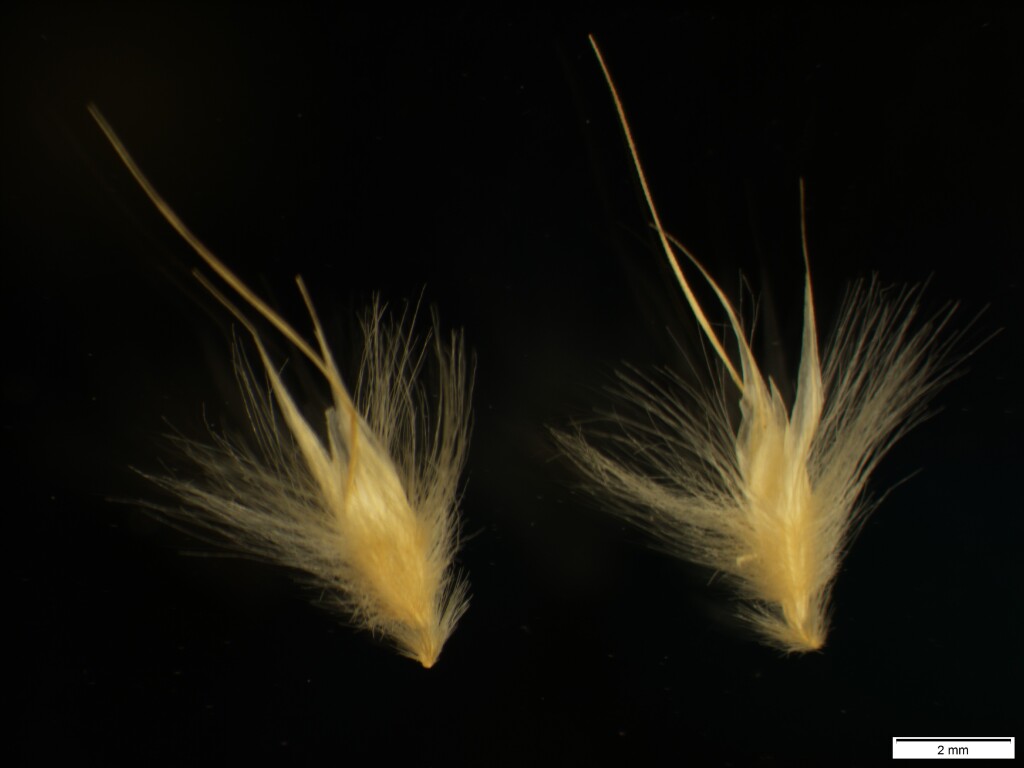Rytidosperma bipartitum
(Kunth.) A.M.Humphreys & H.P.LinderTufted perennial. Culms mostly to 50 cm high. Leaves glabrous to lightly hairy; blade flat or channelled, rarely loosely inrolled, to 30 cm long and 3 mm wide. Panicle linear to lanceolate in outline, mostly 2–6 cm long. Spikelets occasionally purplish on margins of glumes, mostly 4–6-flowered; glumes subequal, acute to acuminate, 7–13 mm long; lemma triangular, 3–4 mm long, thin-textured, prominently nerved, more or less evenly covered by hairs commencing c. 1 mm above the callus tuft, increasing in length from lower to upper, or in fairly distinct rows; the uppermost usually 4–5 mm long; lateral lobes erect, 5–9 mm long, tapering gradually into the 2–3 mm long setiform tips; central awn exceeding lateral lobes by up to 5 mm, the basal part remaining pale and weakly twisted (to ca. 2 rotatons); palea lanceolate to narrowly ovate with a narrow but obtuse, usually twisted apex, thinly membranous, exceeding sinus by 1.5–2.5 mm. Flowers mostly Nov.–Feb.
MuM, Wim, GleP, VVP, VRiv, MuF, GipP, OtP, Gold, CVU, GGr, DunT, NIS, EGU, HSF, HNF, VAlp. Also Qld, NSW, ACT. Mostly a species of grassland or grassy woodland communities. Largely confined to drier northern regions on sandy or rocky soils, but with outlying occurrences on basalt in the Toolern Vale–Bacchus Marsh area.
Closely related to Rytidosperma fulvum, the two previously regarded as conspecific, but differing mainly in the smaller stature, the pale central awn, and, usually, the grassland rather than forest habitat.
Walsh, N.G. (1994). Poaceae. In: Walsh, N.G.; Entwisle, T.J., Flora of Victoria Vol. 2, Ferns and Allied Plants, Conifers and Monocotyledons, pp. 356–627. Inkata Press, Melbourne.
 Spinning
Spinning
